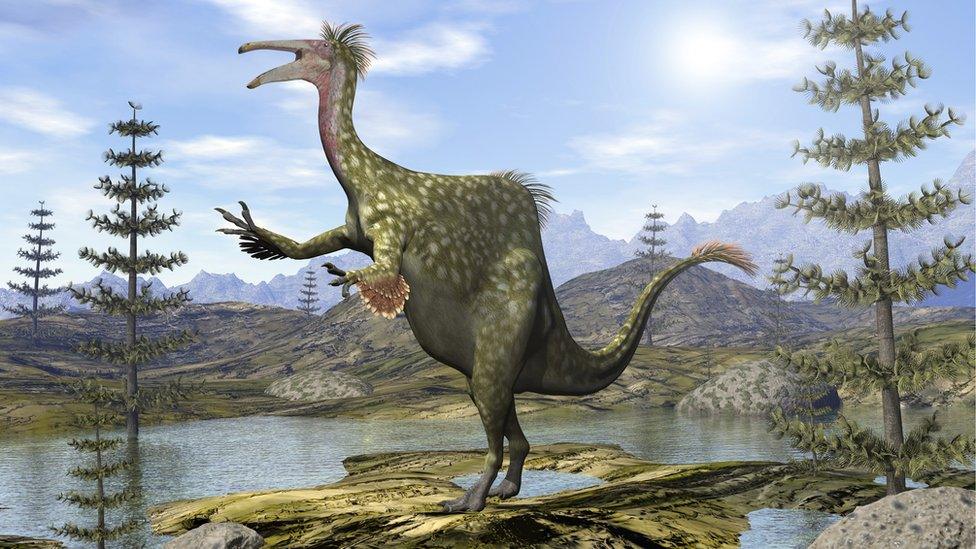Huge ostrich-like dinosaurs once roamed North America, says new study
- Published
- comments

The Deinocheirus dinosaur is a large ornithomimosaur that lived around 70 million years ago
Huge ostrich-like dinosaurs which once lived in ancient North America would have been some of the largest of their species, according to a new study.
The researchers say the giant dinosaurs, which are scientifically known as ornithomimosaurs, grew to super sizes.
They looked at and compared new fossils which they believe would have belonged to two types of this specific dinosaur, including one that was very big and another that was a lot smaller in size.
The fossils examined include foot bones, which are thought be around 85 million years old.
The researchers estimate the larger species could have weighed more than 800kg - which is about the size of a five actual ostriches - and they also think the dino hadn't actually finished growing when it died.
This means it's currently the largest ornithomimosaur discovered so far.
The Big Question: What's the difference between all the dinosaur periods?
These fossils help shed some light on these how the dinosaurs would have lived during the Late Cretaceous of North America.
The Cretaceous period, which is estimated to be about 145.5 and 65.5 million years ago, was when some of the world's most famous dinosaurs roamed the Earth, including the triceratops, ceratops, tyrannosaurus rex.
The recent discovery and examination of the ornithomimosaur fossils may also help scientists get a better overall understanding of an ancient period about which little is known.
Ornithomimosaurs were known for having really small heads, long necks, very powerful legs and fuzz that looked similar to a bird's feathers.
The fossils found are believed to belong to two different ornithomimosaur species
"While we have a reasonably good record of dinosaurs in western North America, our record for the same periods of time in eastern North America are often fairly poor, with large time gaps and many species only being known from very fragmentary remains," Thomas Cullen, who is a research fellow at Carleton University in Canada told Sky News.
"The new fossils that we describe here from Mississippi help to fill part of that gap, providing our first detailed record of ornithomimosaurs from this part of the Cretaceous period in North America, and allowing us to make some comparisons of their biodiversity between here and other locations on Earth," he said.
- Published6 March 2022
- Published7 June 2022
- Published29 August 2022
